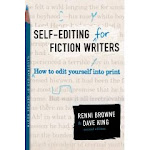Attributions aren't "wrong." Using them doesn't mean your writing is poor. But if a beat of action can be used, that would be much better. Why? Beats of action can pull your reader deeper into your story. How does it do that? Beats give readers something to see, smell, touch, taste or hear; they reveal details about the character and the setting; they help eliminate useless words; and they can make the writing more active.
If Character A's dialogue is in the same paragraph as the action of Character A, we'll know who's talking, so there's no reason to add "he/she said."
Notice below, we know who's talking because the action and the dialogue of each character is in the same paragraph:
"Let her go!" Abba pushed away from a soldier with his shoulder and lunged forward. "She has nothing to do with this!"
The third soldier rushed over, grabbed Abba and held him back. "Oh, really? That's not what we heard." He motioned toward the man touching Mamma. "Aulus, shouldn't convicts pay the full penalty for their crimes?"
Depending on how attributions are used, they can also become a form of telling. I'll discuss that in Part Three.
So, the fewer attributions, the better.
Here are some before and after examples:
BEFORE
"Let her go!" Abba shouted, pushing away from the soldier. "She has nothing to do with this!"
AFTER
"Let her go!" Abba pushed away from the soldier. "She has nothing to do with this!"
Can you feel the difference between these two lines? "Pushed" is more active than "pushing." It gives the writing more life. A part of the scene is played out with ongoing action; the scene moves forward. The exclamation mark shows that the character is shouting, so there's no reason to tell the readers that Abba is shouting by adding, "he shouted." Also, the sentence is shorter, giving it more punch, which adds to the tension of the scene.
But what about scenes that aren't supposed to have this kind of tension? Will eliminating attributions add tension to a scene that doesn't need it? Scenes will usually have tension, just a different kind.
Here's an example where the tension is beneath the surface, rather than an outside force:
"Well, I'm glad I don't have any sin." Alethea swung her legs as she sat on the wall. She thought to scoot in closer to David so her arm might brush against his. Instead, she basked in his scent of leather and pine.
David rested his elbows on his knees and watched her, but Alethea avoided his gaze. "No one is without sin." He leaned toward her. "No one."
She glanced at him from the corner of her eye, but quickly refocused her attention on the horizon. "It doesn't make sense." She shrugged. "Why make someone die when he could clap his hands and say, 'Your sins are forgiven,' and be done with it?"
David stared at her for a while, his mouth closed as if tasting her words.
Shifting under his scrutinizing gaze, she leaned forward and watched the birds soar and dance on the air in front of them.
A gentle breeze caressed her cheek as David lifted her chin. He forced her to look at him. His blue eyes fixated on hers.
"Passion," he said.
Alethea took a long shuddering breath.
"What shows greater love?" He continued to hold her chin. "Someone who sacrifices himself to save your life, or just claps his hands?"
There are times you'll want your scene to move slowly and adding an attribution will help slow the pace or create the right rhythm. This leads to my favorite subject: breaking the rules. Notice above how after the dialogue "Passion" one attribution is used, but it works to create the right rhythm.
Like I said, attributions aren't "wrong." Just use them with care.
Is this information helpful?
Monday, August 31, 2009
Subscribe to:
Post Comments (Atom)












Good explanation and examples, S. (In spite of the pirate in me . . . ;) )
ReplyDeleteLOL. Thank, Nicole. :-)
ReplyDeleteThanks, Sandi. Those were good examples.
ReplyDeleteI hope you found it helpful for your own writing, Janet. Thanks for commenting.
ReplyDelete